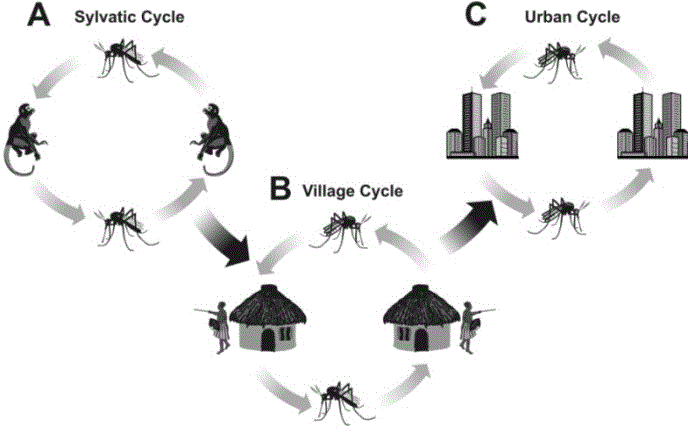
 |
| Figure 2: Epidemiologic cycles of Chikungunya virus. A. Sylvatic cycle. The virus is transmitted between non-human primates with the participation of many species of forest dwelling mosquitoes of the Aedes genus. B. Village cycle. During heavy rain falls, the forest dwelling mosquitoes enter in the nearby villages and can transmit the infection in humans. During this spread of the infection, the domesticated mosquitoes Aedes aegypti become infected and participate in CHIKV transmission. C. Urban cycle. The human migration towards large urban centers can translocate the infection, where the transmission is performed by the urban mosquitos A. aegypti/A. albopictus. The sylvatic cycle of CHIKV transmission has been described only in Africa, while in Asia the transmission is maintained only between humans (only urban cycle) without the participation of reservoirs. After the introduction of CHIKV in the Americas, the viral transmission is maintained exclusively in urban cycles. |